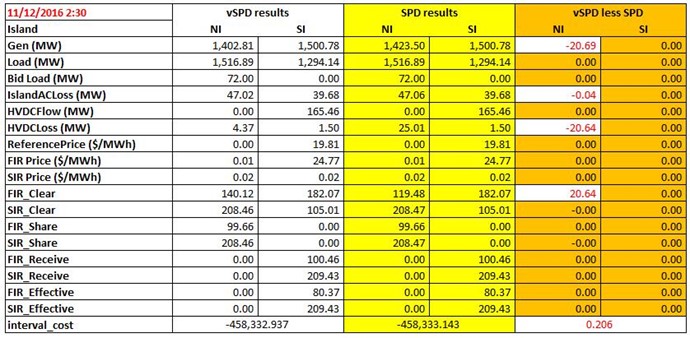We’ve received a couple of questions regarding GDX files and differences between vSPD and SPD outputs in relation to final pricing on 11 December 2016.
The Authority maintains an automated process where vSPD is run each day and the solution compared to that from SPD. More often than not, both models return identical solutions. Occasionally a difference is identified and Authority staff investigate to understand why this occurs. It was this process that alerted Authority staff to final pricing errors on six occasions between 13 and 20 October 2016. The pricing manager ultimately corrected those errors and the published prices changed from being interim to final in November 2016.
Users of vSPD and our daily GDX files have been wondering what the 'x' in the GDX file name denotes. The ‘x’ simply denotes that vSPD and SPD generate different results even though they use the same input data. The 'x' serves as a visual cue to remind vSPD users that vSPD will not replicate SPD for that day. More information on the GDX naming convention is described elsewhere on this forum.
So what happened on 11 December 2016?
The difference between SPD and vSPD on 11 December 2016 is an unusual case. In this situation the energy and reserve prices generated by each model were identical, but the system cost, or more precisely, the 'interval cost', was higher by 0.206 in vSPD than it was for SPD. Previous occurrences of system cost differences between the models have been associated with energy or reserve price differences as well.
The subsequent investigation found that in trading period 6 (02:30) there were significant non-physical HVDC losses in SPD. Non-physical losses are a technical artefact of the way losses are modelled. Using the HVDC loss and flow results shown in the table of summary statistics below, the implied loss factor on the HVDC for the SPD solution produces an improbable 14.21% for a relatively small flow, i.e. 100(25.01 - 1.50)/165.46 = 14.21%. The equivalent loss factor for the vSPD solution is more realistic at only 1.73%, i.e. 100(4.37 - 1.50)/165.46 = 1.73%.
The difference in loss calculation results is a rather technical matter and essentially boils down to the method used by each model to resolve the issue of non-physical losses on the HVDC.
Authority staff have discussed these differences with the system operator. To date, this anomaly with the loss modelling in SPD has not resulted in a material market impact and the system operator plans to address it when a break in the work programme frees up resources to do so.
Table 1: Difference between vSPD and SPD results at island level


